How does a (Smart) Age-Friendly Ecosystem Look in a Post-Pandemic Society?
Abstract
1. Introduction
A Tale of Two Snows
2. Global Aging Societies
3. Creating a Smart City for the 21st Century
3.1. Smart Cities
- Internet of Things (IoT): which facilitates the interconnections of physical devices (e.g., sensors) with buildings and other digital devices, which in turn affords data to be exchanged.
- Big data: refers to the large data collected through various technologies and devices. The processing of big data has the potential to provide predictive insight into user behavior analytics, which in turn can provide information relating to service provisions—health, crime/policing, and business. This in turn has the potential to impact local, regional, and national policies, agendas, and governance [86].
- Blockchain: utilizes cryptography (e.g., Bitcoin) to ensure that the verification and storage of data is safe and ensures security is maintained at all levels. Transactions between governments, regional councils, service providers, and citizens could be streamlined via the implementation and use of Blockchain.
- Artificial Intelligence (AI): utilizes machine learning techniques [87] and has the potential to refine the customer experience via local, regional, national governments, and council agencies.
3.2. Age-Friendly Initiatives
“[…] urge planners and decision makers to act on the items high-lighted in this study, as a lack of action will translate to escalating unmet needs and make Palo Alto unsustainable with respect to its healthcare resources and provision for its residents to age in place”(p. 395) [96].
4. Social Isolation and Loneliness
5. Design Hacks 2020
5.1. Case Studies
5.1.1. Case Study A—Mary (2016)
5.1.2. Case Study B—Joan (2014)
5.1.3. Case Study C—William (2014)
5.1.4. Case Study D—Jane and Remote Sunday Service
6. Pandemic Case Studies
“As the bells struck the stroke of midnight, ringing in 2020, citizens were smiling, pouring another glass of rosé, red wine or supping from their pint of Guinness from the confines of their local pub, house parties, restaurants, or clubs; while singing auld lang syne, shaking each other’s hands, giving a kiss on the cheek to the person next to them or a hearty smooch with a loved one. The biggest challenge of a generation ahead, at this moment in time in the UK was Brexit, little did we know this was about to be surpassed by something even bigger.”[29]
- Scenario #1: Middle-aged family
- Scenario #2: Intergenerational family
- Scenario #3—COVID-19 community support groups
- Scenario #4—Older adults
- Scenario #5—Resident/assisted living/care home(s)
- Scenario #6—Young person living on their own
- Scenario #7—Family who has a member with serious health condition(s)
7. Proposal of New Post-Pandemic Age-Friendly Ecosystems
7.1. Design Hacks, Technology, and IoT Solutions
- Scenario #1—Middle-aged family
- Scenario #2—Intergenerational family
- Scenario #3—COVID-19 community support groups
- Scenario #4—Older adults living independently
- Scenario #5—Resident/Assisted living/Care Home(s)
- Scenario #6—Young person living on their own
- Scenario #7—Family who has a member with serious health condition(s)
8. Recommendations and Conclusions
“Within and across society, and the lives of citizens, the relationships and engagement between the central, inner, and outer hubs/spheres will vary, based on users’ needs, expectations, access to services, facilities and amenities. Sharing information via a closed, select group of friends/acquaintances is not unfamiliar and offers members of that group the opportunity to share information in real time and very quickly.”(p.26)
Author Contributions
Funding
Conflicts of Interest
References
- A Game of Thrones: Analysis of “Jon Snow”. SparkNotes. Available online: https://www.sparknotes.com/lit/a-game-of-thrones/character/jon-snow/ (accessed on 24 August 2020).
- Martin, G.R.R. A Game of Thrones; Bantam Books: New York, NY, USA, 1996; ISBN 0-553-10354-7. [Google Scholar]
- Grossman, L.; George, R.R. Martin’s Dance with Dragons: A Masterpiece Worthy of Tolkien. Time, 7 July 2011. Available online: https://web.archive.org/web/20130823230000/http://www.time.com/time/arts/article/0%2C8599%2C2081774%2C00.html (accessed on 24 August 2020).
- Guillaume, J. This Game of Thrones. Fan Theory Will Blow Your Mind. BuzzFeed, 16 July 2014. Available online: https://www.buzzfeed.com/jennaguillaume/this-game-of-thrones-fan-theory-will-blow-your-mind? (accessed on 22 August 2020).
- Pallotta, F. Fans Have A Crazy Game of Thrones Theory About Jon Snow’ s True Parentage. Business Insider, 17 July 2014. Available online: https://www.businessinsider.com/game-of-thrones-jon-snows-parents-theory-2014-7?r=US&IR=T (accessed on 22 August 2020).
- Wigler, J. This Game of Thrones Theory Will Blow Jon Snow Fans’ Minds. MTV New, 15 July 2014. Available online: http://www.mtv.com/news/1868295/game-of-thrones-jon-snow-mother/ (accessed on 22 August 2020).
- Graham, D. Did Game of Thrones Just Confirm One of the Biggest Jon Snow fan Theories. Metro, 5 May 2015. Available online: https://metro.co.uk/2015/05/05/did-game-of-thrones-season-5-just-confirm-one-of-the-biggest-fan-theories-5180404/ (accessed on 22 August 2020).
- Robinson, J. All the Times Game of Thrones. Tried to Tell You Who Jon Snow’s Parents Are. Vanity Fair, 26 June 2016. Available online: https://www.vanityfair.com/hollywood/2016/06/game-of-thrones-jon-snow-parents-lyanna-stark-rhaegar-targaryen (accessed on 22 August 2020).
- Yglesias, M. Game of Thrones just Revealed Jon Snow’s Real Parents. Vox, 26 June 2016. Available online: https://www.vox.com/2016/6/26/12029644/winds-of-winter-recap-jon-snow-parents (accessed on 22 August 2020).
- Ackerknecht, E.H. A Short History of Medicine; Johns Hopkins University Press: Baltimore, MD, USA, 2016; ISBN 10:1421419548. [Google Scholar]
- Eyeler, W. The changing assessments of John Snow’s and William Farr’s Cholera Studies. Soz. Präventivmedizin 2001, 46, 225–232. [Google Scholar] [CrossRef] [PubMed]
- Paneth, N.; Vinten-Johansen, P.; Brody, H.; Rip, M. A rivalry of foulness: Official and unofficial investigations of the London cholera epidemic of 1854. Am. J. Public Health 1998, 88, 1545–1553. [Google Scholar] [CrossRef] [PubMed]
- Snow, J. Plan showing the Ascertained Deaths from Cholera. Welcome Library Welcome Images. Available online: https://wellcomecollection.org/works/dx4prdbj (accessed on 18 August 2020).
- Snow, J. A Map Taken from a Report by Dr John Snow. Welcome Library, Welcome Images. Available online: https://wellcomecollection.org/works/uxgfjt62/images?id=d4gnqhwy (accessed on 18 August 2020).
- Roger, S. John Snow’s Data Journalism: The Cholera Map that Changed the Word. 2013. Available online: https://www.theguardian.com/news/datablog/2013/mar/15/john-snow-cholera-map (accessed on 5 August 2020).
- Your Genome. Science in the Time of Cholera. 2017. Available online: https://www.yourgenome.org/stories/science-in-the-time-of-cholera (accessed on 5 August 2020).
- Zielinski, S. Cholera, John Snow and the Grand Experiment. Smithsonian Magazine, 18 August 2010. Available online: https://www.smithsonianmag.com/science-nature/cholera-john-snow-and-the-grand-experiment-33494689/ (accessed on 5 August 2020).
- Scally, G. Public health profession. In Encyclopedia of Health Economics; Elsevier: Amsterdam, The Netherlands, 2014; pp. 204–209. ISBN -9780123756787. [Google Scholar]
- Spreeuwenberg, P.; Kroneman, M.; Paget, J. Reassessing the global mortality burden of the 1918 influenza pandemic. Am. J. Epidemiol. 2018, 187, 2561–2567. [Google Scholar] [CrossRef]
- Gagnon, A.; Miller, M.S.; Hallman, S.A.; Bourbeau, R.; Herring, D.A.; Earn, D.J.; Madrenas, J. Age-specific mortality during the 1918 influenza pandemic: Unravelling the mystery of high young adult mortality. PLoS ONE 2013, 8, e69586. [Google Scholar] [CrossRef]
- Ribeiro, S.P.; Dáttilo, W.; Barbosa, D.S.; Coura-Vital, W.; Chagas, I.A.D.; Dias, C.P.; Silva, A.V.C.C.dE.; Morais, M.H.F.; Góes-Neto, A.; Azevedo, V.A.C.; et al. Worldwide COVID-19 spreading explained: Traveling numbers as a primary driver for the pandemic. An. Acad. Bras. Ciênc. An. Acad. Bras. Ciênc. 2020, 92. [Google Scholar] [CrossRef] [PubMed]
- Ribeiro, S.P.; Castro e Silva, A.; Dáttilo, W.; Reis, A.B.; Góes-Neto, A.; Alcantara, L.C.J.; Giovanetti, M.; Coura-Vital, W.; Fernandes, G.W.; Azevedo, V.A.C. Severe airport sanitarian control could slow down the spreading of COVID-19 pandemics in Brazil. PeerJ 2020, 8, e9446. [Google Scholar] [CrossRef]
- Ironstone, P. The pandemic is (extra) ordinary. TOPIA Can. J. Cult. Stud. COVID 19 Essays 2020. [Google Scholar] [CrossRef]
- King-Hill, S.; Powell, M. What Does it Mean When the Government Say it is ‘Following the Science’? The Conversation, 29 April 2020. Available online: https://theconversation.com/coronavirus-what-does-it-mean-when-the-government-says-it-is-following-the-science-137109 (accessed on 6 August 2020).
- Peck, T. The Government Claims It’s Been ‘Led by the Science’. So Why Has It Led to a Place Far Worse than Elsewhere? Independent, 13 April 2020. Available online: https://www.independent.co.uk/voices/coronavirus-uk-deaths-lockdown-boris-johnson-nhs-testing-a9462951.html (accessed on 6 August 2020).
- UK Government. Scientific Advisory Group for Emergencies (SAGE): Coronaviurs (COVID-19) Response—Participant. 4 May 2020; Updated 17 July 2020. Available online: https://www.gov.uk/government/publications/scientific-advisory-group-for-emergencies-sage-coronavirus-covid-19-response-membership/list-of-participants-of-sage-and-related-sub-groups (accessed on 18 September 2020).
- Jayakumar, P.; Brohi, S.N.; Zaman, N. Top 7 lessons learned from COVID-19 pandemic. TechRxiv Prepr. 2020. [Google Scholar] [CrossRef]
- Freeman, S.; Marston, H.; Olynick, J.; Musselwhite, C.; Kulczycki, C.; Genoe, R.; Xiong, B. Intergenerational effects on the impacts of technology use in later life: Insights from an international, multi-site study. Int. J. Enviorn. Res. Public Health 2020, 7, 5711. [Google Scholar] [CrossRef] [PubMed]
- Marston, H.R.; Musselwhite, C.; Hadley, R.A. COVID-19 vs. Social Isolation: The Impact Technology Can Have on Communities, Social Connections and Citizens. Ageing Issues, 18 March 2020; The British Society of Gerontology. Available online: https://ageingissues.wordpress.com/2020/03/18/covid-19-vs-social-isolation-the-impact-technology-can-have-on-communities-social-connections-and-citizens/?fbclid=IwAR1sUsffKNd_G5u6d_oc0Z56u4Es7HyoCJYKr0qSnqFxX68pD3PY5JaSl7g (accessed on 6 August 2020).
- Marston, H.R.; van Hoof, J. Who Doesn’t Think about Technology When Designing Urban Environments for Older People? A Case Study Approach to a Proposed Extension of the WHO’S Age-Friendly Cities Model. Int. J. Enviorn. Res. Public Health 2019, 16, 3525. [Google Scholar] [CrossRef]
- United Nations. World Population Ageing 2019. Available online: https://www.un.org/en/development/desa/population/publications/pdf/ageing/WorldPopulationAgeing2019-Report.pdf (accessed on 9 August 2020).
- Organisation for Economic Co-operation and Development (OECD). Ageing in Cities; OECD Publishing: Paris, France, 2015; ISBN 9789264231146.
- Van Hoof, J.; Kazak, J.K.; Perek-Białas, J.M.; Peek, S.T.M. The challenges of urban ageing: Making cities age-friendly in Europe. Int. J. Environ. Res. Public Health 2018, 15, 2473. [Google Scholar] [CrossRef] [PubMed]
- Van Hoof, J.; Kazak, J.K. Urban ageing. Indoor Built Environ. 2018, 27, 583–586. [Google Scholar] [CrossRef]
- Buffel, T.; Phillipson, C. Can global cities be ‘age-friendly cities’? Urban development and ageing populations. Cities 2016, 55, 94–100. [Google Scholar] [CrossRef]
- World Health Organization. Global Age-Friendly Cities: A Guide; World Health Organization: Geneva, Switzerland, 2007; ISBN 9789241547307.
- Harrison, C.; Donnelly, I.A. A theory of smart cities. In Proceedings of the 55th Annual Meeting of the ISSS-2011, Hull, UK, 17–22 July 2011. [Google Scholar]
- Praharaj, S.; Han, H. Cutting through the clutter of smart city definitions: A reading into the smart city perceptions in India. City Cult. Soc. 2019, 18, 100289. [Google Scholar] [CrossRef]
- Yovanof, G.S.; Hazapis, G.N. An architectural framework and enabling wireless technologies for digital cities & intelligent urban environments. Wirel. Pers. Commun. 2009, 49, 445–463. [Google Scholar] [CrossRef]
- Foord, J. The new boomtown? Creative city to tech city in east London. Cities 2013, 33, 51–60. [Google Scholar] [CrossRef]
- Batty, M. Smart cities, big data. Environ. Plan. B Plan. Des. 2012, 39, 191–193. [Google Scholar] [CrossRef]
- Anthopoulos, L.; Fitsilis, P. From digital to ubiquitous cities: Defining a common architecture for urban development. In Proceedings of the 6th International Conference on Intelligent Environments, Kuala Lumpur, Malaysia, 19–21 July 2010; pp. 301–306. [Google Scholar] [CrossRef]
- Sairamesh, J.; Lee, A.; Anania, L. Information cities. Commun. ACM 2004, 47, 29–31. [Google Scholar] [CrossRef]
- Yigitcanlar, T.; O’Connor, K.; Westerman, C. The making of knowledge cities: Melbourne’s knowledge-based urban development experience. Cities 2008, 25, 63–72. [Google Scholar] [CrossRef]
- California Institute for Smart Communities. Smart communities guide book. 2001. Available online: http://www.smartcommunities.org/guidebook.html (accessed on 8 November 2020).
- Florida, R. Cities and the Creative Class; Routledge: New York, NY, USA, 2005. [Google Scholar] [CrossRef]
- UN. Sustainable Development Goals, Goal 11: Make Cities Inclusive, Safe Resilient and Sustainable. Available online: https://www.un.org/sustainabledevelopment/cities/ (accessed on 9 August 2020).
- Allam, Z. Cities and the Digital Revolution: Aligning Technology and Humanity; Palgrave Macmillan: London, UK, 2020; ISBN 978-3-030-29799-2. [Google Scholar]
- Lee, M.; Yun, J.J.; Pyka, A.; Won, D.; Kodama, F.; Schiuma, G.; Park, H.; Jeon, J.; Park, K.; Jung, K.; et al. How to respond to the Fourth Industrial Revolution, or the Second Information Technology Revolution? Dynamic new combinations between technology, marker, and society through open innovation. J. Open Innov. Technol. Mark. Complex. 2018, 4, 1–24. [Google Scholar]
- Edvardsson, I.R.; Yigitcanlar, T.; Pancholi, S. Knowledge city research and practice under the microscope: A review of empirical findings. Knowl. Manag. Res. Pract. 2016, 14, 537–564. [Google Scholar] [CrossRef]
- Carrillo, J.; Yigitcanlar, T.; Garcia, B.; Lonnqvist, A. Knowledge and the City: Concepts, Applications and Trends of Knowledge-Based Urban Development; Routledge: New York, NY, USA, 2014. [Google Scholar]
- Quan-Haase, A. Technology and Society: Social Networks, Power, and Inequality; Oxford University Press: Don Mills, ON, USA, 2012; p. 61. [Google Scholar]
- Miller, J.C. The Geography of Technopoles: Computer and Electronic, Manufacturing by MSA 2005. Master’s Thesis, The University of North Carolina at Greensboro, Greensboro, NC, USA, 2007. Available online: https://libres.uncg.edu/ir/uncg/listing.aspx?id=1180 (accessed on 23 September 2020).
- Caves, R.W. Encyclopedia of the City; Routledge: New York, NY, USA, 2004; p. 662. ISBN 978-0415862875. [Google Scholar]
- Allam, Z. Building a conceptual framework for smarting an existing city in Mauritius: The case of Port louis. J. Biourbanism 2017, 2, 47–61. [Google Scholar]
- Meloa, A. How Smart City Technology & the Internet of Things Will Change Our Apartments, Grids and Communities. Business Insider, 16 January 2020. Available online: https://www.businessinsider.com/iot-smart-city-technology?r=US&IR=T#:~:text=Smart%20cities%20use%20Internet%20of,utilities%20and%20services%2C%20and%20more (accessed on 14 October 2020).
- Piramuthu, O.B. Connected bicycles—State-of-the-art and adoption decision. IEEE Internet Things J. 2017, 4, 987–995. [Google Scholar] [CrossRef]
- Romanillos, G.; Austwick, M.Z.; Ettema, D.; de Kruijf, J. Big data and cycling. Transp. Rev. 2015, 1647, 1–20. [Google Scholar] [CrossRef]
- Behrendt, F. Cycling the smart and sustainable city: Analyzing EC policy documents on internet of things, mobility and transport, and smart cities. Sustainability 2019, 11, 763. [Google Scholar] [CrossRef]
- Juarez, A.V.; Cook, M.; Potter, S. Roadmaps to Utopia: Tales of the Smart City. Urban Studies 2018, 55, 3385–3403. [Google Scholar]
- Cook, M. Product service system innovation in the Smart City. Int. J. Entrep. Innov. 2018, 19, 46–55. [Google Scholar] [CrossRef]
- Marston, H.R.; Samuels, J. A review of age friendly virtual assistive technologies and their effect on daily living for carers and dependent adults. Healthcare 2019, 7, 49. [Google Scholar] [CrossRef]
- White, P.J.; Marston, H.R.; Shore, L.; Turner, R. Learning from COVID-19: Design, age-friendly technology, hacking and mental models [version 1; peer review: Awaiting peer review]. Emerald Open Res. 2020, 2, 21. [Google Scholar] [CrossRef]
- Pantri. Available online: https://pantri.net/ (accessed on 5 October 2020).
- Rjab, A.B.; Mellouli, S. Smart cities in the era of artificial intelligence and internet of things. In Proceedings of the 19th Annual International Conference on Digital Government Research: Governance in the Data Age, Delft, The Netherlands, 30 May–1 June 2018; pp. 1–10. [Google Scholar]
- Kiefer, C.; Behrendt, F. Smart e-bike monitoring system: Real-time open source and open hardware GPS assistance and sensor data for electrically-assisted bicycles. IET Intell. Transp. Syst. 2016, 10, 79–88. [Google Scholar] [CrossRef]
- Jenkins, M.; Duggan, D.; Negri, A. Towards a connected bicycle to communicate with vehicles and infrastructure: Multimodel alerting interface with Networked Short-Range Transmissions (MAIN-ST). In Proceedings of the 2017 IEEE Conference on Cognitive and Computational Aspects of Situation Management (CogSIMA), Savannah, GA, USA, 27–31 March 2017; pp. 2–4. [Google Scholar]
- Behrendt, F. Why cycling matters for Smart Cities. Internet of Bicycles for Intelligent Transport. J. Transp. Geogr. 2016, 56, 157–164. [Google Scholar] [CrossRef]
- Digiteum. The Role of IoT in Smart Grid Technology. 10 September 2019. Available online: https://www.digiteum.com/iot-smart-grid-technology#:~:text=Smart%20grid%20based%20on%20IoT,consumption%20on%20the%20consumer’s%20side (accessed on 14 October 2020).
- Shin, D. A living lab as socio-technical ecosystem: Evaluating the Korean living lab of internet of things. Gov. Inf. Q. 2019, 36, 264–275. [Google Scholar] [CrossRef]
- Lee, C.; Lee, B.; Kong, Y. Privacy protection for a secure u-city life. Lect. Notes Comput. Sci. 2007, 4490, 685–692. [Google Scholar]
- Shin, D. A critique of Korean national information strategy: A case of national information infrastructures. Gov. Inf. Q. 2007, 24, 624–645. [Google Scholar] [CrossRef]
- Chang, Y.; Dong, X.; Sun, W. Influence of characteristics of the internet of things on consumer purchase intention. Soc. Behav. Personal. 2014, 42, 321–330. [Google Scholar] [CrossRef]
- Shin, D. A socio-technical framework for internet-of-things design: A human centered design for the internet of things. Telemat. Inform. 2014, 31, 519–531. [Google Scholar] [CrossRef]
- Allam, Z. Achieving neuroplasticity in artificial neural networks through smart cities. Smart Cities 2019, 2, 118–134. [Google Scholar] [CrossRef]
- Allam, Z.; Dhunny, Z.A.; Siew, G.; Jones, D. Towards smart urban regeneration: Findings of an urban footprint survey in Port Louis Mauritius. Smart Cities 2018, 1, 121–133. [Google Scholar] [CrossRef]
- The Open University. 2014–2016. MK Smart Project. Available online: http://www.mksmart.org/ (accessed on 21 September 2020).
- Allam, Z.; Dhunny, Z.A. On big data, artificial intelligence and smart cities. Cities 2019, 89, 80–91. [Google Scholar] [CrossRef]
- Blanco, J.L.; Fuchs, S.; Parsons, M.; Ribeirinho, M.J. Artificial Intelligences: Construction Technology Next Frontier. McKinsey Website. 2018. Available online: https://www.mckinsey.com/industries/capital-projects-and-infrastructure/our-insights/artificial-intelligence-construction-technologys-next-frontier# (accessed on 9 September 2020).
- Guo, K.; Lu, Y.; Gao, H.; Cao, R. Artificial intelligence-based semantic Internet of Things in a user-centric smart city. Sensors 2018, 18, 1341. [Google Scholar] [CrossRef]
- Bibri, S.E. The IoT for smart sustainable cities of the future: An analytical framework for sensor-based big data applications for environmental sustainability. Sustain. Cities and Soc. 2018, 38, 230–253. [Google Scholar] [CrossRef]
- Reyna, A.; Martin, C.; Chen, J.; Soler, E.; Diaz, M. On blockchain and its integration with IoT: Challenges and opportunities. Future Gener. Comput. Syst. 2018, 88, 173–190. [Google Scholar] [CrossRef]
- Perera, C.; McCormick, C.; Bandara, A.K.; Price, B.A.; Nuseibeh, B. Privacy-by-design framework for assessing internet of things applications and platforms. In Proceedings of the 6th International Conference on the Internet of Things, Stuttgart, Germany, 7–9 November 2016. [Google Scholar]
- Obedait, A.A.; Youssef, M.; Ljepava, N. Citizen-centric approach in delivery of smart government Services. In Smart Technologies and Innovation for a Sustainable Future; Advances in Science, Technology & Innovation (IEREK Interdisciplinary Series for Sustainable Development); Al-Masri, A., Curran, K., Eds.; Springer: Cham, Switzerland, 2019. [Google Scholar] [CrossRef]
- Alkhamisi, A.; Monowar, M. Rise of the augmented reality: Current and future application areas. Int. J. Internet Distrib. Syst. 2013, 1, 25–34. [Google Scholar] [CrossRef]
- Mircea, R.T.; Ivan, M.L. Big data: Present and future. Database Syst. J. 2014, 5, 32–41. [Google Scholar]
- De Montjoye, Y.A.; Farzanehfar, A.; Hendrickx, J.; Rocher, L. Solving Artificial Intelligence’s Privacy Problem. Field Actions Science Reports, Special Issue [Artificial Intelligence and Robotics in the City] 17. 2017. Available online: https://journals.openedition.org/factsreports/4494 (accessed on 4 May 2020).
- Smart Dubai 2021. Available online: https://2021.smartdubai.ae/ (accessed on 5 May 2020).
- United Arab Emerites. UAE Government Strategy. Last Updated 17 September 2019. Available online: https://u.ae/en/more/uae-future/2021 (accessed on 5 May 2020).
- Lim, Y.; Edelenbos, J.; Gianoli, A. Identifying the results of smart city development: Findings from systematic literature review. Cities 2019, 95. [Google Scholar] [CrossRef]
- Cocchia, A. Smart and Digital City: A Systematic Literature Review. In Smart City; Springer: Berlin, Germany, 2014; pp. 13–43. [Google Scholar]
- Anthopoulos, L.G. Understanding the smart city domain: A literature review. In Transforming City Governments for Successful Smart Cities; Springer: Berlin, Germany, 2015; pp. 9–21. [Google Scholar]
- Trindade, E.P.; Hinnig, M.P.F.; da Costa, E.M.; Marques, J.S.; Bastos, R.C.; Yigitcanlar, T. Sustainable development of smart cities: A systematic review of the literature. J. Open Innov. Technol. Mark. Complex. 2017, 3, 11. [Google Scholar] [CrossRef]
- Komninos, N.; Mora, L. Exploring the big picture of smart city research. Sci. Reg. Ital. J. Reg. Sci. 2018, 1, 15–38. [Google Scholar]
- Komninos, N.; Pallot, M.; Schaffers, H. Special issue on smart cities and the future internet in Europe. J. Knowl. Econ. 2013, 4, 119–134. [Google Scholar] [CrossRef]
- Ruza, J.; Kim, J.I.; Leung, I.; Kam, C.; Ng, S. Sustainable age-friendly cities: An evaluation framework and case study application on Palo Alto, California. Sustain. Cities Soc. 2014. [Google Scholar] [CrossRef]
- Community Services Department of the City of Palo Alto. Available online: https://www.cityofpaloalto.org/gov/depts/csd/default.asp (accessed on 12 August 2020).
- Meijer, A.; Bolívar, M.P.R. Governing the smart city: A review of the literature on smart urban governance. Int. Rev. Adm. Sci. 2016, 82, 392–408. [Google Scholar] [CrossRef]
- Centre for Ageing Better. UK Network Age Friendly Communities. Available online: https://www.ageing-better.org.uk/uk-network-age-friendly-communities (accessed on 5 May 2020).
- Adapa, A.; Nah, F.F.H.; Hall, R.H.; Siau, K.; Smith, S.N. Factors influencing the adoption of smart wearable devices. Int. J. Human Comput. Interact. 2018, 34, 399–409. [Google Scholar] [CrossRef]
- Pallavicini, F.; Ferrari, A.; Mantovani, F. Video Games for Well-Being: A Systematic Review on the Application of Computer Games for Cognitive and Emotional Training in the Adult Population. Front. Psychol. 2018, 9, 2127. [Google Scholar] [CrossRef]
- Simons, D.J.; Boot, W.R.; Charness, N.; Gathercole, S.E.; Chabris, C.F.; Hambrick, D.Z.; Stine-Morrow, E.A.L. Do “Brain-Training” Programs Work? Psychol. Sci. Public Interest 2016, 17, 103–186. [Google Scholar] [CrossRef] [PubMed]
- De Schutter, B. Never too old to play: The appeal of digital games to an older audience. Games Cult. 2011, 6, 155–170. [Google Scholar] [CrossRef]
- De Schutter, B.; Brown, J.A. Digital games as a source of enjoyment in later life. Games Cult. 2015, 11, 28–52. [Google Scholar] [CrossRef]
- De Schutter, B.; Roberts, A.R.; Franks, K. Miami six-O: Lessons learned from an intergenerational game design workshop. In Game-Based Learning Across the Lifespan; Advances in Game-Based Learning; Romero, M., Sawchuk, K., Blat, J., Sayago, S., Ouellet, H., Eds.; Springer: Cham, Switzerland, 2017; pp. 13–27. [Google Scholar] [CrossRef]
- De la Hera, T.; Loos, E.; Simons, M.; Blom, J. Benefits and factors influencing the design of intergenerational digital games: A systematic literature review. Societies 2017, 7, 18. [Google Scholar] [CrossRef]
- Brown, J.A.; De Schutter, B. Game design for older adults: Lessons from a life course perspective. Int. J. Gaming Comput. Mediat. Simul. (IJGCMS) 2016, 8, 1–12. [Google Scholar] [CrossRef]
- Marston, H.R.; Duro, M.d.C.M. Revisiting the twentieth century through the lens of generation X and digital games: A scoping review. Comput. Game J. 2020, 9, 127–161. [Google Scholar] [CrossRef]
- Cao, Y.; Li, J.; Qin, X.; Hu, B. Examining the effect of overload on the Mhealth application resistance behavior of elderly users: An SOR perspective. Int. J. Environ. Res. Public Health 2020, 17, 6658. [Google Scholar] [CrossRef]
- Marston, H.R.; Hall, A.K. Gamification: Application for health and health information technology engagement. In Handbook of Research on Holistic Perspectives in Gamification for Clinical Practice Hershey; Novak, D., Tulu, B., Brendryen, H., Eds.; IGI Global: Hershey, PA, USA, 2015; pp. 78–104. [Google Scholar] [CrossRef]
- Deterding, S.; Dixon, D.; Khaled, R.; Nacke, L. From game design elements to gamefulness: Defining gamification. In Proceedings of the MindTrek Conference 2011, Tampere, Finland, 28–30 September 2011. [Google Scholar]
- Kang, R.; Dabbish, L.; Fruchter, N.; Kiesler, S. My data just goes everywhere: User mental models of the internet and implications for privacy and security. In Proceedings of the Symposium on Usable Privacy and Security (SOUPS), Ottawa, ON, Canada, 22–24 July 2015; USENIX Association: Berkeley, CA, USA, 2015; pp. 39–52. [Google Scholar]
- Renaud, K.; Volkamer, M.; Renkema-Padmos, A. Why doesn’t Jane protect her privacy ? In Privacy Enhancing Technologies PETs 2014; Lecture Notes in Computer, Science; De Cristofaro, E., Murdoch, S.J., Eds.; Springer: Cham, Switzerland, 2014; Volume 8555. [Google Scholar]
- Ray, H.; Wolf, F.; Kuber, R.; Aviv, A.J. Woe is me: Examining older adults’ perceptions of privacy. In Proceedings of the CHI Conference on Human Factors in Computing Systems Extended Abstracts (CHI’19 Extended Abstracts), Glasgow, UK, 4–9 May 2019; ACM: New York, NY, USA, 2019; p. 6. [Google Scholar]
- Lorenzen-Huber, L.; Boutain, M.; Camp, L.J.; Shankar, K.; Connelly, K.H. Privacy, technology, and aging: A proposed framework. Ageing Int. 2011, 36, 232–252. [Google Scholar] [CrossRef]
- Smith, A.; Page, D.U.S. Smartphone Use in 2015; Pew Research Center: Washington, DC, USA, 2015; Available online: https://www.pewinternet.org/2015/04/01/us-smartphone-use-in-2015/ (accessed on 5 May 2018).
- Fox, S.; Duggan, M. Mobile Health 2012; Pew Internet: Washington, DC, USA, 2012; Available online: https://www.pewinternet.org/wp-content/uploads/sites/9/media/Files/Reports/2012/PIP_MobileHealth2012_FINAL.pdf (accessed on 21 November 2019).
- Krämer, N.C. Social effects of virtual assistants. A review of empirical results with regard to communication. In Intelligent Virtual Agents; Lecture Notes in Computer, Science; Prendinger, H., Lester, J., Ishizuka, M., Eds.; Springer: Berlin/Heidelberg, Germany, 2008; Volume 5208. [Google Scholar] [CrossRef]
- Rawassizadeh, R.; Sen, T.; Kim, S.J.; Meurisch, C.; Keshavarz, H.; Mühlhäuser, M.; Pazzani, M. Manifestation of virtual assistants and robots into daily life: Vision and challenges. CCF Trans. Pervasive Comp. Interact. 2019, 1, 163–174. [Google Scholar] [CrossRef]
- Cohen, P.; Cheyer, A.; Horvitz, E.; El Kaliouby, R.; Whittaker, S. On the future of personal assistants. In Proceedings of the 2016 CHI Conference Extended Abstracts on Human Factors in Computing Systems, San Jose, CA, USA, 7–12 May 2016; pp. 1032–1037. [Google Scholar]
- Breazeal, C. Toward sociable robots. Robot. Auton. Syst. 2003, 42, 167–175. [Google Scholar] [CrossRef]
- Šabanović, S. Robots in society, society in robots. Int. J. Soc. Robot. 2010, 2, 439–450. [Google Scholar] [CrossRef]
- European Commission Information Society and Media, Unit F4 New Infrastructure Paradigms and Experimental Facilities. Living Labs for User-Driven Open Innovation. An Overview of the Living Labs Methodology, Activities and Achievements. January 2009. Available online: https://www.eurosportello.eu/sites/default/files/Living%20Lab%20brochure_jan09_en_0.pdf (accessed on 14 October 2020).
- Shin, D.-H.; Park, Y.J. Understanding the internet of things ecosystem: Multi-level analysis of users, society, and ecology. Digit. Policy Regul. Gov. Digit. Policy Regul. Gov. 2017, 19, 77–100. [Google Scholar] [CrossRef]
- Ng, C.L.; Wakenshaw, Y.L. The internet-of-things: Review and research directions. Int. J. Res. Mark. 2017, 34, 3–21. [Google Scholar] [CrossRef]
- Shin, D. User centric cloud service model in public sectors. Gov. Inf. Q. 2013, 30, 194–203. [Google Scholar] [CrossRef]
- Liedtke, C.; Welfens, M.J.; Rohn, H.; Nordmann, J. Living lab user-driven innovation for sustainability. Int. J. Sustain. High. Educ. 2012, 13, 106–118. [Google Scholar] [CrossRef]
- Vaziri, D.D.; Aal, K.; Ogonowski, C.; von Rekowski, T.; Kroll, M.; Marston, H.R.; De Rosario, H.; Poveda, R.; Gschwind, Y.; Delbaere, K.; et al. Exploring user experience and technology acceptance for a fall prevention system: Results from a randomized clinical trial and a living lab. Eur. Rev. Aging Phys. Act. (EURAPA) 2016, 13. [Google Scholar] [CrossRef]
- Lindsay, S.; Jackson, D.; Schofield, G.; Olivier, P. Engaging Older People Using Participatory Design. ACM Press, 2012 [cited 7 November 2014]. p. 1199. Available online: http://dl.acm.org/citation.cfm?doid=2207676.2208570 (accessed on 15 September 2020).
- Hartswood, M.; Rouncefield, M.; Procter, R.; Slack, R.; Vob, A.; Buscher, M.; Rouncefield, M.; Rouchy, P. Corealisation: Towards a principled synthesis of ethnimethodology and participatory design. Scand. J. Inf. Syst. 2002, 14, 2003. [Google Scholar]
- Schumacher, J.; Feurstein, K. Living labs—A new multi-stakeholder approach to user integration. In Proceedings of the 3rd International Conference on Interoperability of Enterprise Systems and Applications (I-ESA’07), Funchal, Madeira, Portugal, 27–30 March 2007. [Google Scholar]
- Torku, A.; Chan, A.P.C.; Yung, E.H.K. Implementation of age-friendly initiatives in smart cities: Probing the barriers through a systematic review. Built Environ. Proj. Asset Manag. 2020. [Google Scholar] [CrossRef]
- Marston, H.R.; Morgan, D.J. Technology & social media during COVID-19 pandemic. Special issue: COVID-19 & geriatric mental health worldwide. IPA Bulletin 2020, 37, 3. Available online: https://www.ipa-online.org/publications/ipa-bulletin/featured-articles/covid-19-bulletin-articles/technology-social-media-during-covid19 (accessed on 7 August 2020).
- Victor, C.; Scambler, S.; Bond, J. The Social World of Older People: Understanding Loneliness and Social Isolation in Later Life. Growing Older; Open University Press: Maidenhead, UK, 2009. [Google Scholar]
- Victor, C.R.; Scambler, S.J.; Bowling, A.N.N.; Bond, J. A survey of older people in Great Britain. Ageing Soc. 2005, 25, 357–375. [Google Scholar] [CrossRef]
- Aartsen, M.; Jylhä, M. Onset of loneliness in older adults: Results of a 28 year prospective study. Eur. J. Ageing 2011, 8, 31–38. [Google Scholar] [CrossRef]
- Utz, R.L.; Swenson, K.L.; Caserta, M.; Lund, D.; de Vries, B. Feeling lonely versus being alone: Loneliness and social support among recently bereaved persons. J. Gerontol. Ser. B Psychol. Sci. Soc. Sci. 2014, 69, 85–94. [Google Scholar] [CrossRef]
- Burholt, V.; Windle, G.; Morgan, D.J. CFAS Wales team. A social model of loneliness: The roles of disability, social resources, and cognitive impairment. Gerontologist 2017, 57, 1020–1030. [Google Scholar] [CrossRef]
- Holt-Lunstad, J.; Smith, T.B.; Baker, M.; Harris, T.; Stephenson, D. Loneliness and social isolation as risk factors for mortality: A meta-analytic review. Perspect. Psychol. Sci. 2015, 10, 227–237. [Google Scholar] [CrossRef]
- Valtorta, N.K.; Kanaan, M.; Gilbody, S.; Ronzi, S.; Hanratty, B. Loneliness and social isolation as risk factors for coronary heart disease and stroke: Systematic review and meta-analysis of longitudinal observational studies. Heart 2016, 102, 1009–1016. [Google Scholar] [CrossRef]
- Dinkins, C.S. Seeing oneself in the fact of the other: The value and challenge of human connectedness for older adults. J. Psychosoc. Nurs. Ment. Health Serv. 2017, 55, 13–17. [Google Scholar] [CrossRef]
- Schlomann, A.; Seifert, A.; Zank, S.; Woopen, C.; Rietz, C. Use of Information and Communication Technology (ICT) devices among the oldest-old: Loneliness, anomie, and autonomy. Innov. Aging 2020, 4. [Google Scholar] [CrossRef]
- Francis, J.; Ball, C.; Kadylak, T.; Cotten, S.R. Aging in the digital age: Conceptualizing technology adoption and digital inequalities. In Ageing and Digital Technology; Neves, B.B., Vetere, F., Eds.; Springer: Singapore, 2019; pp. 35–49. [Google Scholar] [CrossRef]
- Cotten, S.R.; Anderson, W.A.; McCullough, B.M. Impact of internet use on loneliness and contact with others among older adults: Cross-sectional analysis. J. Med. Internet Res. 2013, 15, e39. [Google Scholar] [CrossRef]
- Czaja, S.J.; Boot, W.R.; Charness, N.; Rogers, W.A.; Sharit, J. Improving social support for older adults through technology: Findings from the PRISM randomized controlled trial. Gerontologist 2018, 58, 467–477. [Google Scholar] [CrossRef] [PubMed]
- Brown, J.A.; Marston, H.R. Gen X and digital games: Looking back to look forward. In Human Aspects of IT for the Aged Population. Applications in Health, Assistance, and Entertainment; Lecture Notes in Computer, Science; Zhou, J., Salvendy, G., Eds.; Springer: Cham, Switzerland, 2018; Volume 10927. [Google Scholar] [CrossRef]
- Marston, H.R. Millennials and ICT—Findings from the Technology 4 Young Adults (T4YA) Project: An Exploratory Study. Societies 2019, 9, 80. [Google Scholar] [CrossRef]
- Tondeur, J.; Sinnaeve, I.; van Braak, J. ICT as cultural capital: The relationship between socioeconomic status and the computer-use profile of young people. New Media Soc. 2010, 13, 151–168. [Google Scholar] [CrossRef]
- Carroll, J.; Howard, S.; Vetere, F.; Peck, J.; Murphy, J. Just what do the youth of today want? Technology appopriation by young people. In Proceedings of the 35th Annual Hawaii International Conference on System Sciences, Big Island, HI, USA, 10 January 2002; pp. 1777–1785. [Google Scholar]
- Tully, C.J. Growing up in technologicalworlds: How modern technologies shape the everyday lives of young people. Bull. Sci. Technol. Soc. 2003, 23, 444–456. [Google Scholar] [CrossRef]
- Hynan, A.; Murray, J.; Goldbart, J. Happy and excited: Perceptions of using digital technology and social media by young people who use augmentative and alternative communication. Child Lang. Teach. Ther. 2014, 30, 175–186. [Google Scholar] [CrossRef]
- Chick, A.; Micklethwaite, P. Design for Sustainable Change—How Design and Designers can Drive the Sustainability Agenda; AVA Publishing SA: Lausanne, Switzerland, 2011. [Google Scholar]
- Czaja, S.; Boot, W.R.; Charness, N.; Rogers, W.A. Designing for Older Adults-Principles and Creative Human Factor Approaches, 3rd ed.; CRC Press: Boca Raton, FL, USA, 2019. [Google Scholar]
- Kaya, B.Y.; Dağdeviren, M. Selecting occupational safety equipment by MCDM approach considering universal design principles. Hum. Factors Ergon. Manuf. Serv. Ind. 2016, 26, 224–242. [Google Scholar] [CrossRef]
- Jones, M.; Marsden, G. Mobile Interaction Design; John Wiley & Sons: Chichester, UK, 2006. [Google Scholar]
- Dunne, A.; Raby, F. Speculative Everything—Design Fiction and Social Daydreaming; MIT Press: Cambridge, MA, USA, 2013. [Google Scholar]
- Cooper, R.; Burton, E.; Cooper, G.L. Wellbeing: A Complete Reference Guide, Wellbeing and the Environment; John Wiley & Sons: Chichester, UK, 2014; Volume 2. [Google Scholar]
- Shore, L.; Kiernan, L.; de Eyto, A.; Bhaird, D.N.A.; White, P.J.; Fahey, T.; Moane, S. Older Adult Insights for age-friendly environments, products and service systems. Des. Technol. Educ. 2018, 23, 40–58. [Google Scholar]
- Shore, L. Developing the Concept of Shared Usability in Product Design for Older Adults. Master’s Thesis, Institute of Technology Carlow, Carlow, Ireland, 2015. [Google Scholar]
- UK Government. Prime Minister’s Statement on Coronavirus (COVID-19). In Speech; 23 March 2020. Available online: https://www.gov.uk/government/speeches/pm-address-to-the-nation-on-coronavirus-23-march-2020 (accessed on 15 August 2020).
- Worldometer. Coronavirus Cases in the United Kingdom (2020)—Worldometer. Available online: https://www.worldometers.info/coronavirus/country/uk/ (accessed on 28 September 2020).
- Chan, S.P.; Plummer, R. Recession is unprecedented, says Chancellor Rishi Sunak. BBC News, Business, 12 August 2020. Available online: https://www.bbc.co.uk/news/business-53753189 (accessed on 14 August 2020).
- Available online: https://www.cityam.com/uk-unemployment-730000-lose-jobs-since-march/ (accessed on 20 September 2020).
- ONS. Labour Market Overview, UK. August 2020; Published 11 August 2020. Available online: https://www.ons.gov.uk/employmentandlabourmarket/peopleinwork/employmentandemployeetypes/bulletins/uklabourmarket/august2020 (accessed on 20 September 2020).
- Murray, J. We Did What We Set Out to Achieve: The Staff Who Moved Into Care Homes. The Guardian News Paper, 28 April 2020. Available online: https://www.theguardian.com/society/2020/apr/28/we-did-what-we-set-out-to-achieve-the-staff-who-moved-into-care-homes (accessed on 15 August 2020).
- Akande, A.; Cabral, P.; Casteleyn, S. Understanding the sharing economy and its implication on sustainability in smart cities. J. Clean. Prod. 2020, 277, 124077. [Google Scholar] [CrossRef]
- Liang, J.; Xu, Y. Second-hand clothing consumption: A generational cohort analysis of the Chinese market. Int. J. Consum. Stud. 2018, 42, 120–130. [Google Scholar] [CrossRef]
- UNREICH, R. Slowing Down Fast Fashion. Sunday Age, 13 October 2019. Available online: https://www.smh.com.au/lifestyle/fashion/slow-approach-in-the-era-of-fast-fashion-20191009-p52z5t.html (accessed on 6 November 2020).
- Leke, R.G.F.; Kaboré, B.J.; King, A.; Pallansch, M.A.; Tomori, O.; Jack, A.D.; Kironde, N.E.; Lopes-Feio, R.J.; Chunsuttiwat, S.; Maiga, Z.; et al. Certifying the Interruption of Wild Poliovirus Transmission in the WHO African Region on the Turbulent Journey to a Polio-Free World. Lancet 2020, 8, 1345–1351. [Google Scholar]
- Oswald, F.; Jopp, D.; Rott, C.; Wahl, H.-W. Is aging in place a resource for or risk to life satisfaction? Gerontologist 2010, 51, 238–250. [Google Scholar] [CrossRef]
- Sixsmith, A.; Sixsmith, J. Ageing in place in the United Kingdom. Ageing Int. 2008, 32, 219–235. [Google Scholar] [CrossRef]
- NSAI. EN 17161:2019 Design for All. Accessibility Following a Design for all Approach in Products, Goods and Services. Extending the Range of Users. In Dublin, Ireland: National Standards Authority of Ireland. 2019. Available online: https://www.nsai.ie/about/news/a-design-standard-that-works-for-all/ (accessed on 28 October 2020).
- What the Mayor Does. Greater Manchester Combined Authority. 2020. Available online: https://www.greatermanchester-ca.gov.uk/the-mayor (accessed on 28 September 2020).
- Heffer, G. Coronavirus: North East Lockdown Begins as Curfew For Bars and Pubs and Ban on Household Mixing Brought. Skye News, 18 September 2020. Available online: https://news.sky.com/story/coronavirus-curfews-for-bars-and-pubs-among-new-lockdown-restrictions-in-northeast-england-12073858 (accessed on 18 September 2020).
- Ridler, F. Last Orders! Newcastle Sinks its Final Pints Before Curfew Comes in Across North-East from 10pm Tonight as Revellers in Leeds Make the Most of Their Final Days of Freedom with City Also on the Brink of a Local Lockdown. Daily Mail, 18 September 2020. Available online: https://www.dailymail.co.uk/news/article-8746837/Newcastle-sinks-final-pint-curfew-comes-North-East-10pm-tonight.html (accessed on 18 September 2020).
- Parveen, N. Stricter Covid Restrictions Imposed in Lancashire, Merseyside and Warrington. The Guardian, 18 September 2020. Available online: https://www.theguardian.com/world/2020/sep/18/stricter-covid-restrictions-imposed-in-lancashire (accessed on 18 September 2020).
- Tapsfield, J. North West, Midlands and West Yorkshire will go into Lockdown from Tuesday Amid Fears Ministers ‘Could Extend Autumn Half-Term by a Week’ as Part of NATIONWIDE 14-day ‘Circuit-Breaker’ to Stem Spread of Covid. Daily Mail, 18 September 2020. Available online: https://www.dailymail.co.uk/news/article-8747257/Is-England-heading-HALF-TERM-lockdown.html (accessed on 18 September 2020).
- BBC News. Coronavirus: Newport and Merthyr Tydfil. Under Close Watch, 18 September 2020. Available online: https://www.bbc.co.uk/news/uk-wales-54202858 (accessed on 18 September 2020.).
- BBC News. Coronavirus: New rules and lockdowns ‘could be too late’. 18 September 2020. Available online: https://www.bbc.co.uk/news/uk-wales-54144564 (accessed on 18 September 2020).
- Sproule, L.; McCormack, J. Coronavirus Q&A: What has Changed in NI? BBC News, Northern Ireland, 15 September 2020. Available online: https://www.bbc.co.uk/news/uk-northern-ireland-53007269 (accessed on 18 September 2020).
- BBC News. Coronavirus: Local Restrictions on BT60 Begin this Evening. BBC News, 18 September 2020. Available online: https://www.bbc.co.uk/news/uk-northern-ireland-54202059 (accessed on 18 September 2020).
- Esson, G. Coronavirus in Scotland: What are the Latest Lockdown Rules? BBC News, 14 September 2020. Available online: https://www.bbc.co.uk/news/uk-scotland-53166816 (accessed on 18 September 2020).
- Pyman, T. Chris Whitty ‘Wants a New Two-Week NATIONAL Lockdown and True UK Cases are as High as 38,000-a-day’, ex-WHO Expert Who Sits on Independent Safe Panel Claims. Daily Mail, 17 September 2020. Available online: https://www.dailymail.co.uk/news/article-8741417/Professor-Chris-Whitty-wants-new-two-week-national-lockdown-ex-expert-claims.html (accessed on 18 September 2020).
- Marsh, S. London New Year’s Eve Fireworks Cancelled, Says Sadiq Khan. The Guardian, 18 September 2020. Available online: https://www.theguardian.com/uk-news/2020/sep/18/london-new-years-eve-fireworks-display-cancelled-sadiq-khan-coronavirus (accessed on 18 September 2020).
- Dikken, J.; van den Hoven, R.F.; van Staalduinen, W.H.; Hulsebosch-Janssen, L.M.; van Hoof, J. How older people experience the age-friendliness of their city: Development of the age-friendly cities and communities questionnaire. Int. J. Environ. Res. Public Health 2020, 17, 6867. [Google Scholar] [CrossRef]
- Van Hoof, J.; Dikken, J.; Buttiġieġ, S.C.; van den Hoven, R.F.M.; Kroon, E.; Marston, H.R. Age-friendly cities in The Netherlands: An explorative study of facilitators and hindrances in the built environment and ageism in design. Indoor Built Environ. 2020, 29, 417–437. [Google Scholar] [CrossRef]

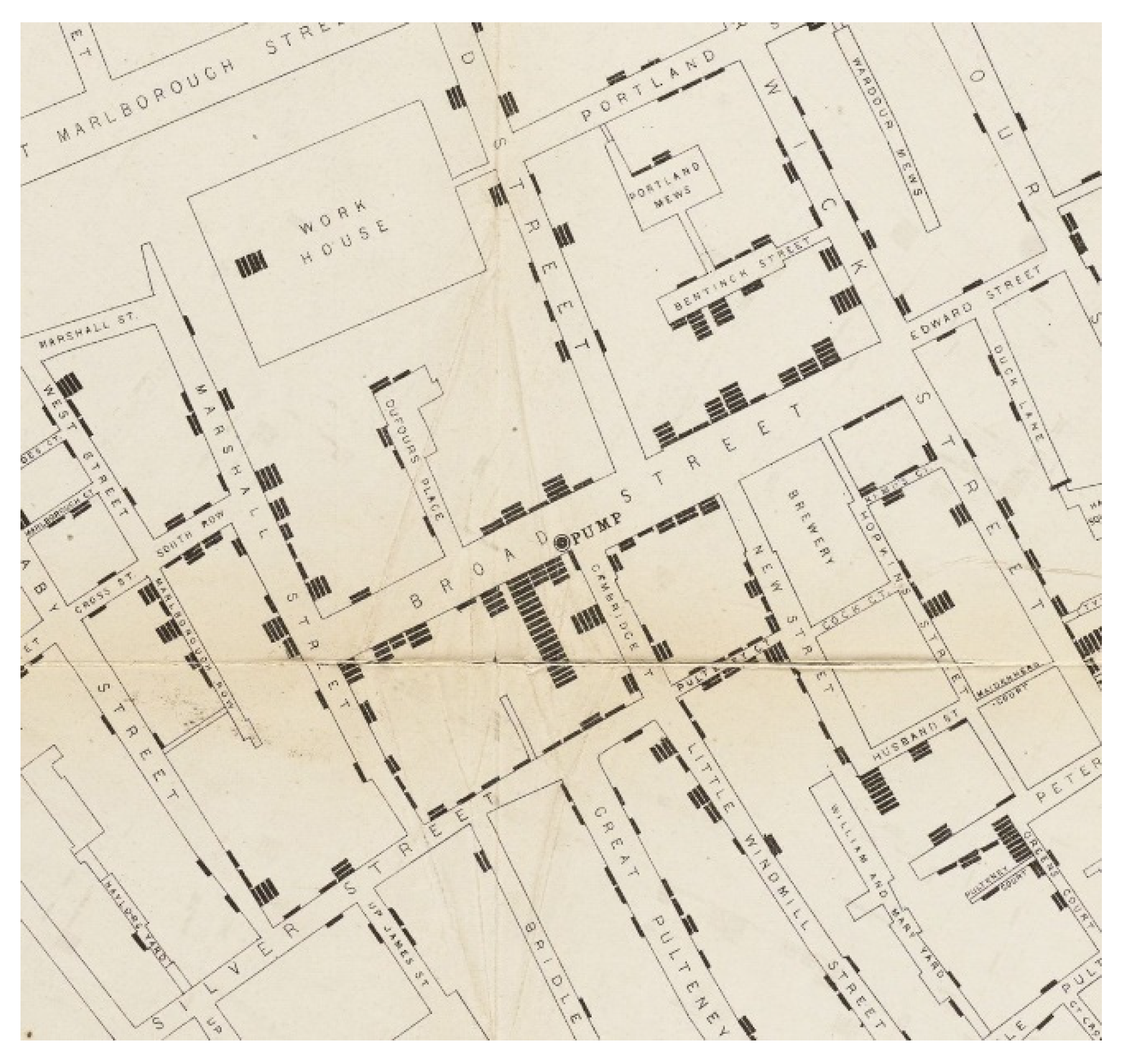
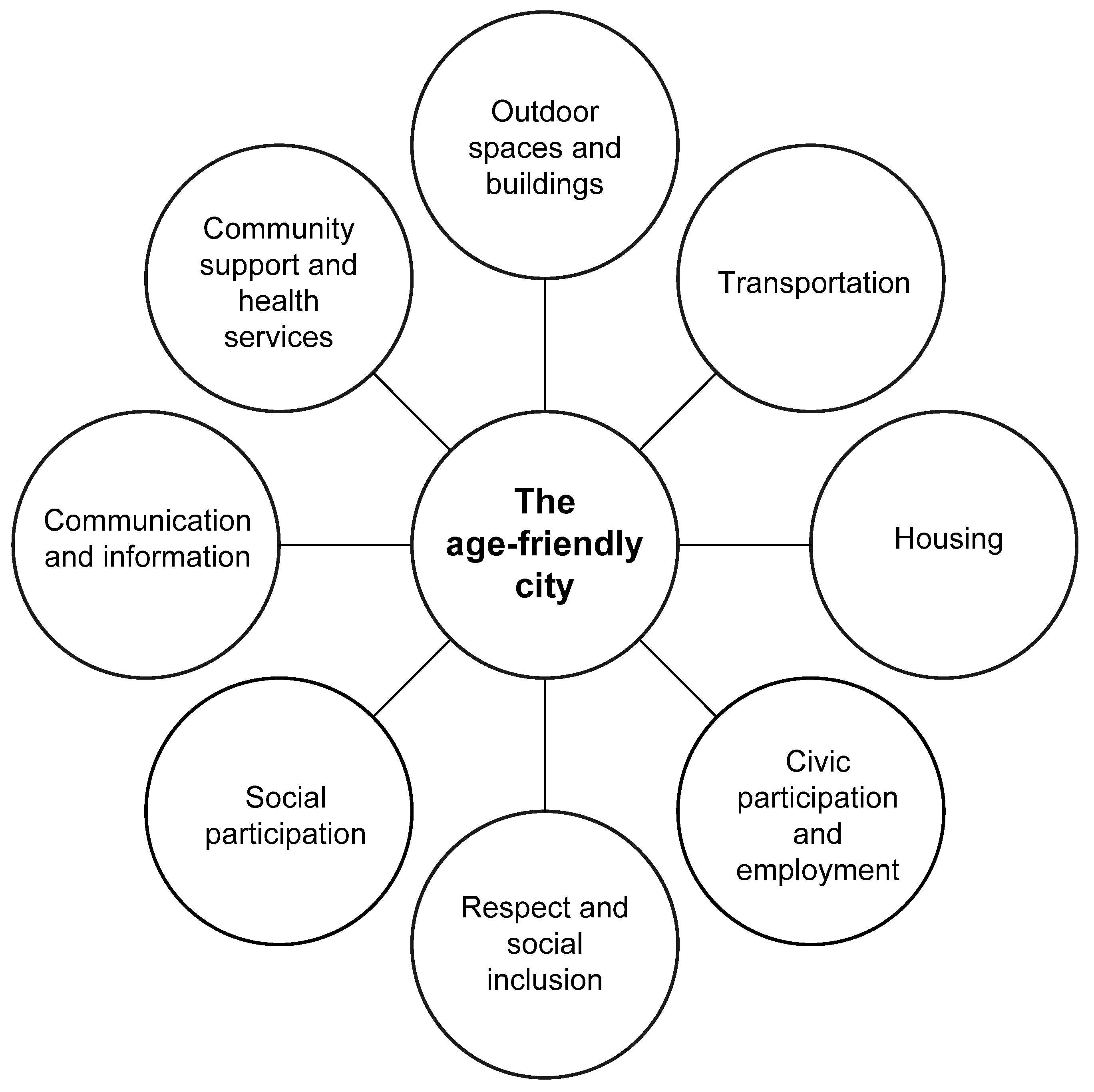

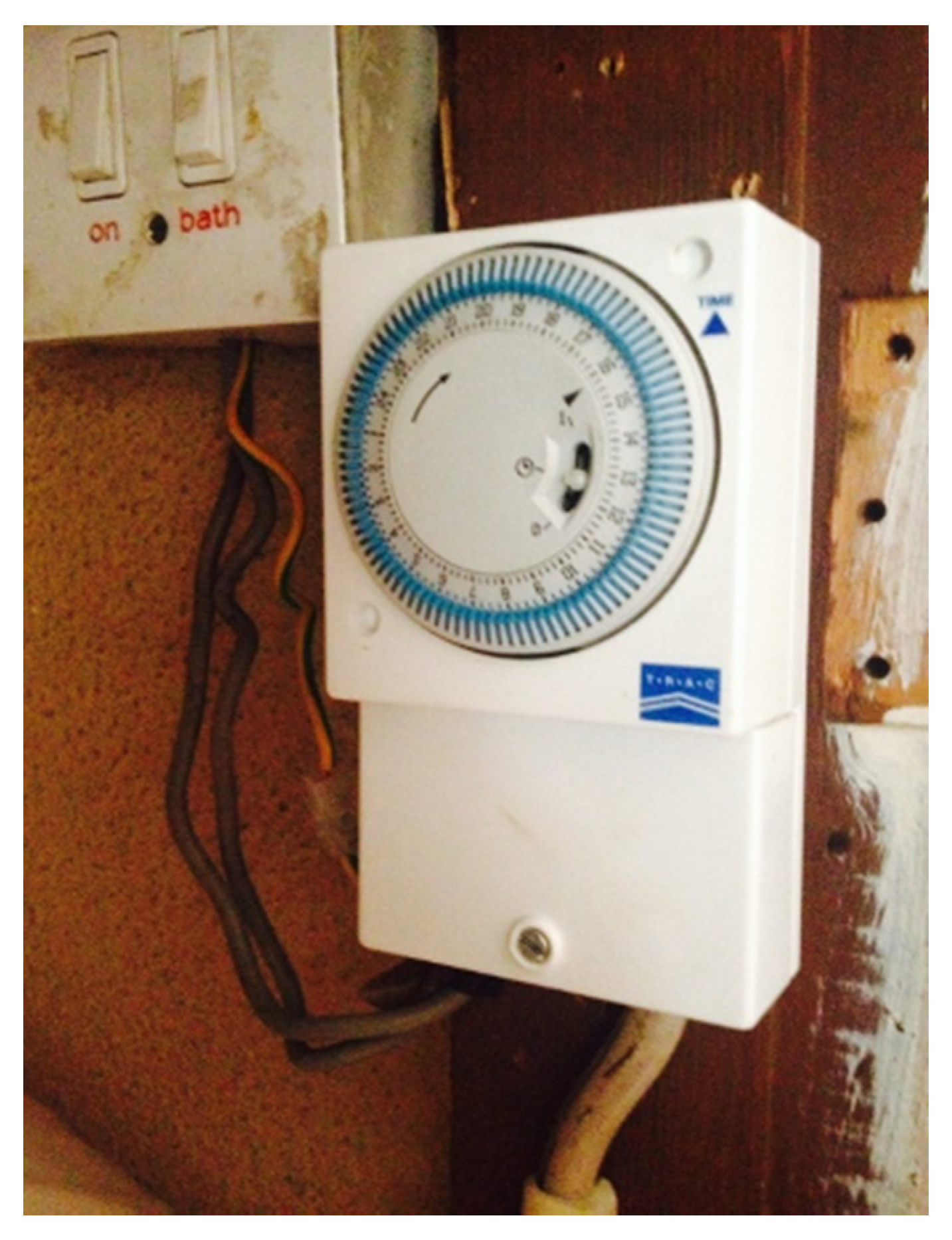
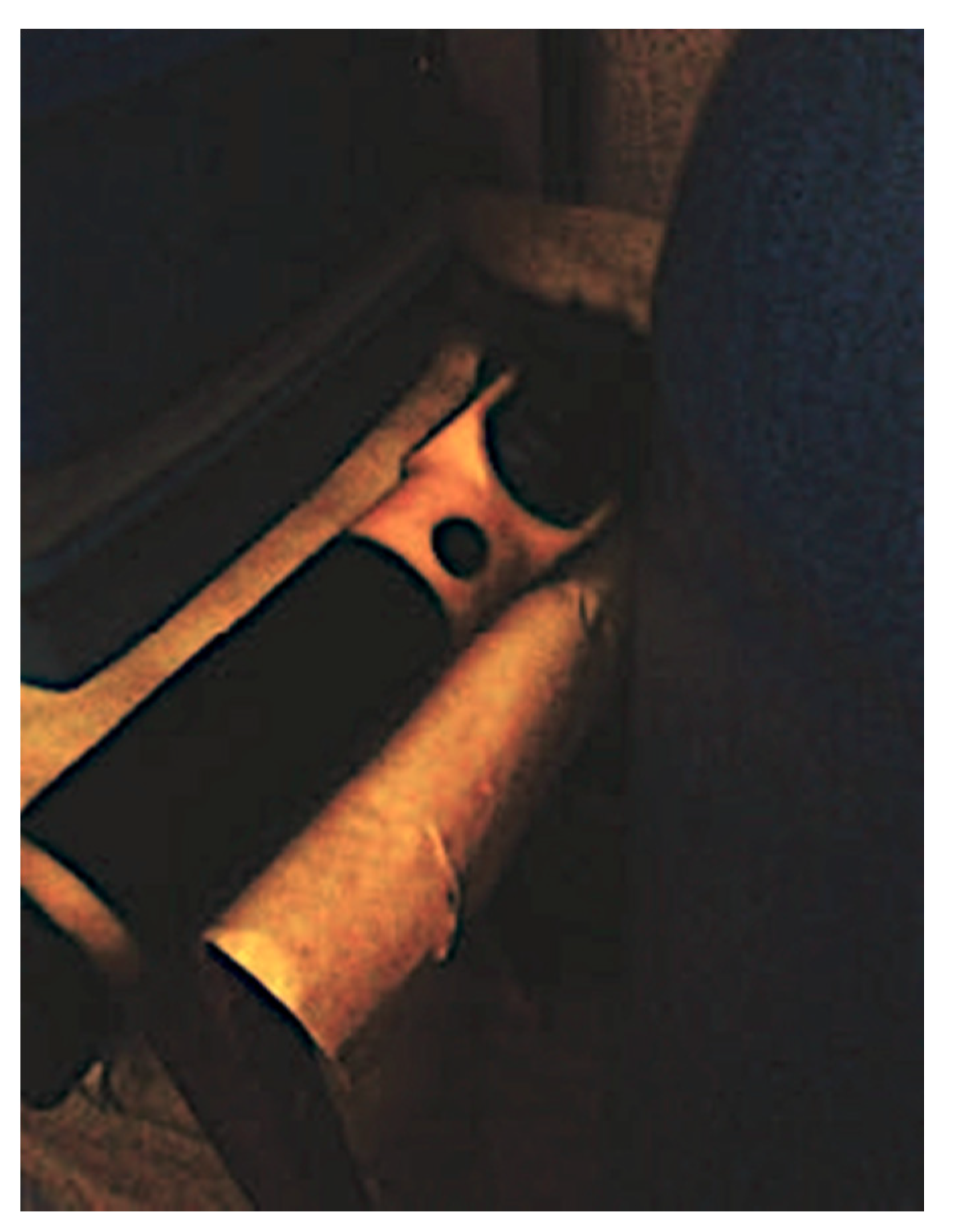
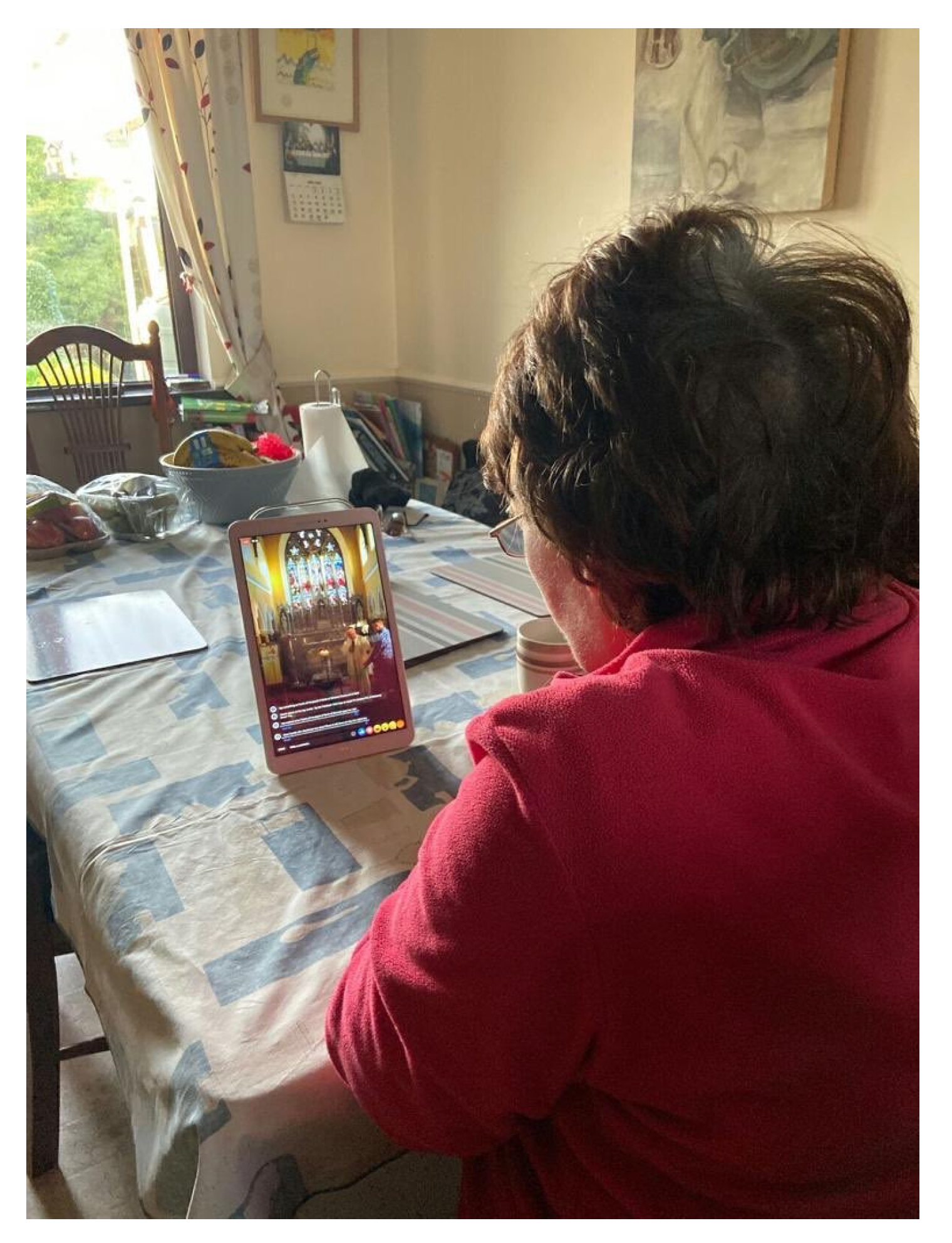
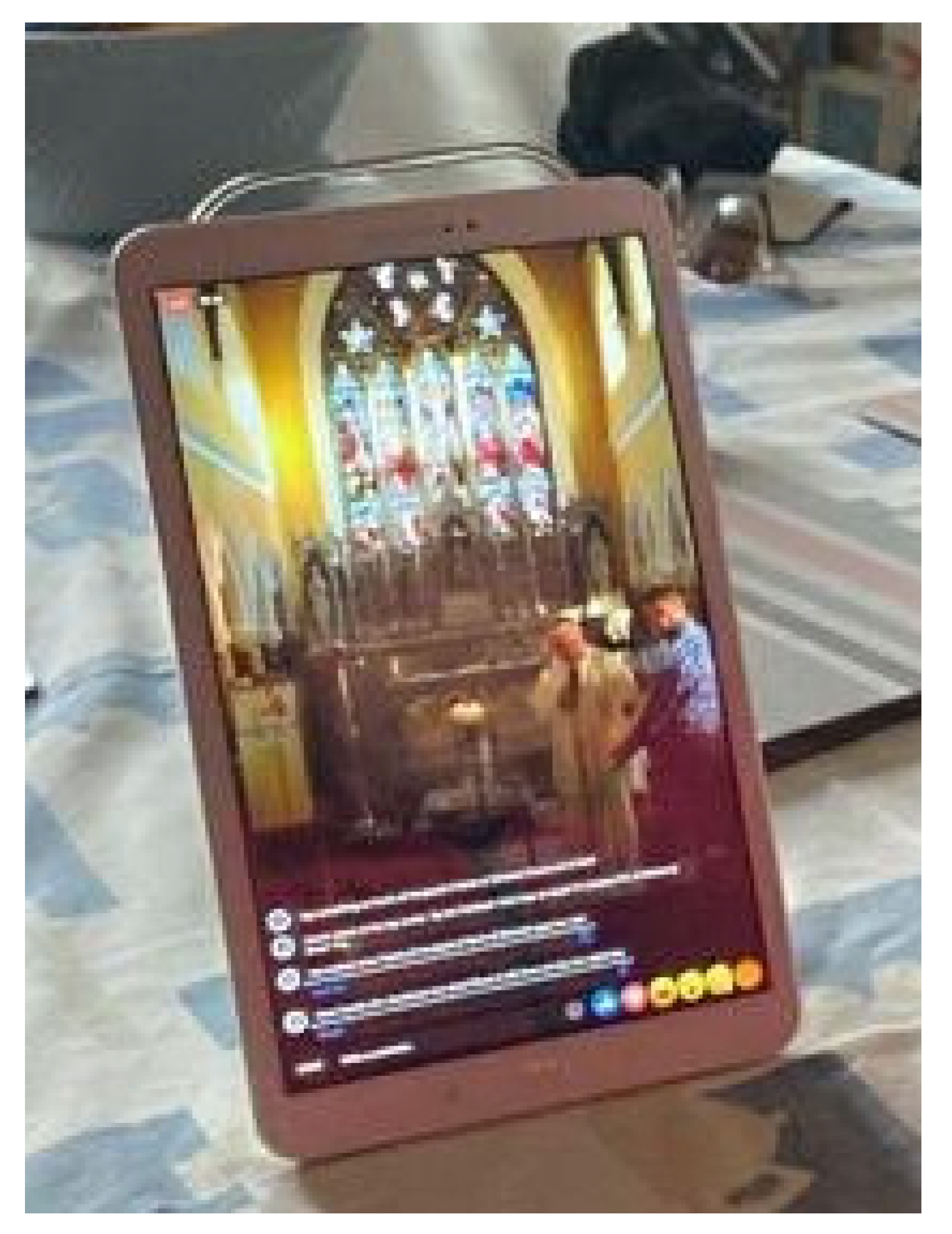
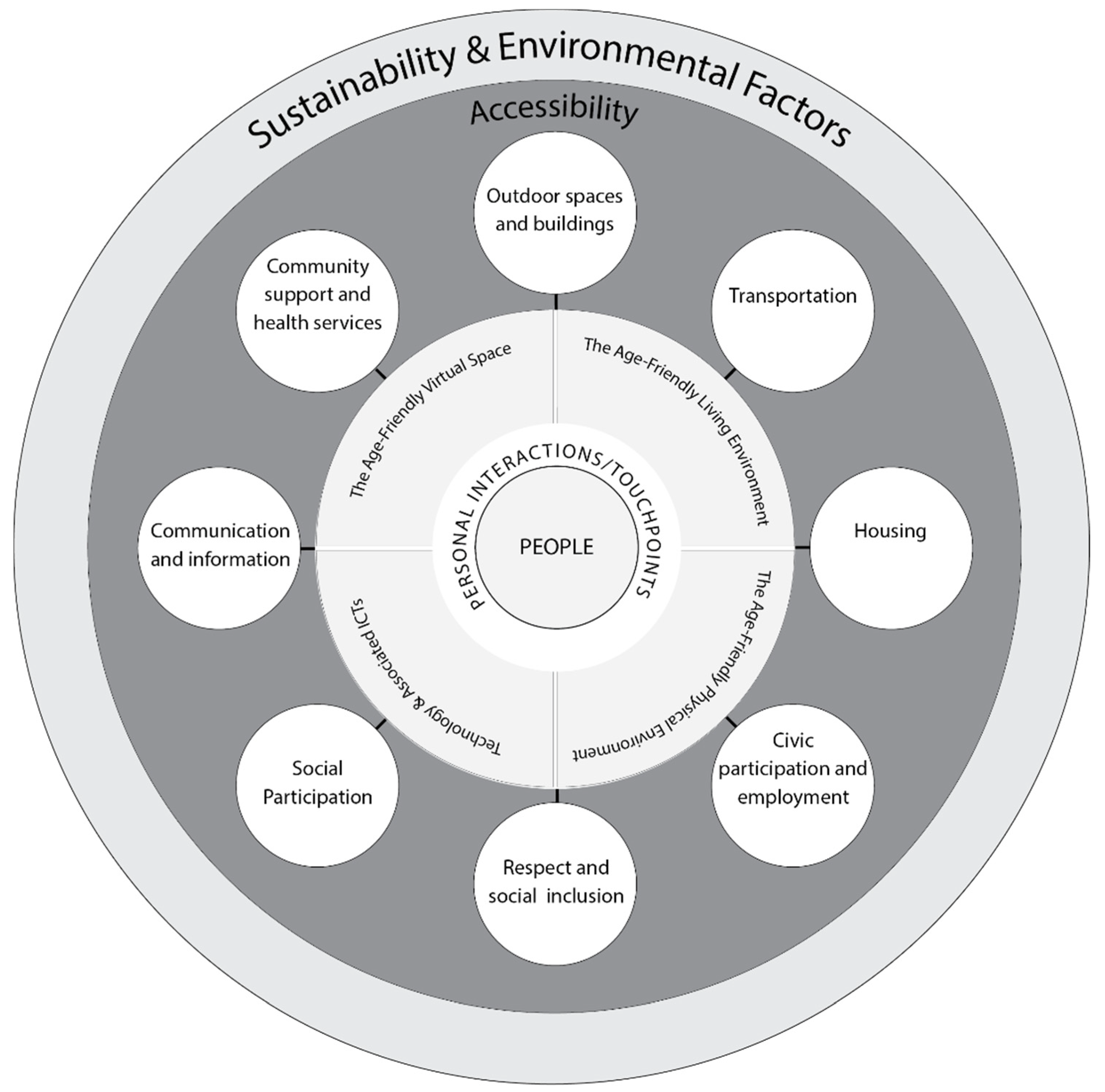
Publisher’s Note: MDPI stays neutral with regard to jurisdictional claims in published maps and institutional affiliations. |
© 2020 by the authors. Licensee MDPI, Basel, Switzerland. This article is an open access article distributed under the terms and conditions of the Creative Commons Attribution (CC BY) license (http://creativecommons.org/licenses/by/4.0/).
Share and Cite
Marston, H.R.; Shore, L.; White, P.J. How does a (Smart) Age-Friendly Ecosystem Look in a Post-Pandemic Society? Int. J. Environ. Res. Public Health 2020, 17, 8276. https://doi.org/10.3390/ijerph17218276
Marston HR, Shore L, White PJ. How does a (Smart) Age-Friendly Ecosystem Look in a Post-Pandemic Society? International Journal of Environmental Research and Public Health. 2020; 17(21):8276. https://doi.org/10.3390/ijerph17218276
Chicago/Turabian StyleMarston, Hannah Ramsden, Linda Shore, and P.J. White. 2020. "How does a (Smart) Age-Friendly Ecosystem Look in a Post-Pandemic Society?" International Journal of Environmental Research and Public Health 17, no. 21: 8276. https://doi.org/10.3390/ijerph17218276
APA StyleMarston, H. R., Shore, L., & White, P. J. (2020). How does a (Smart) Age-Friendly Ecosystem Look in a Post-Pandemic Society? International Journal of Environmental Research and Public Health, 17(21), 8276. https://doi.org/10.3390/ijerph17218276






